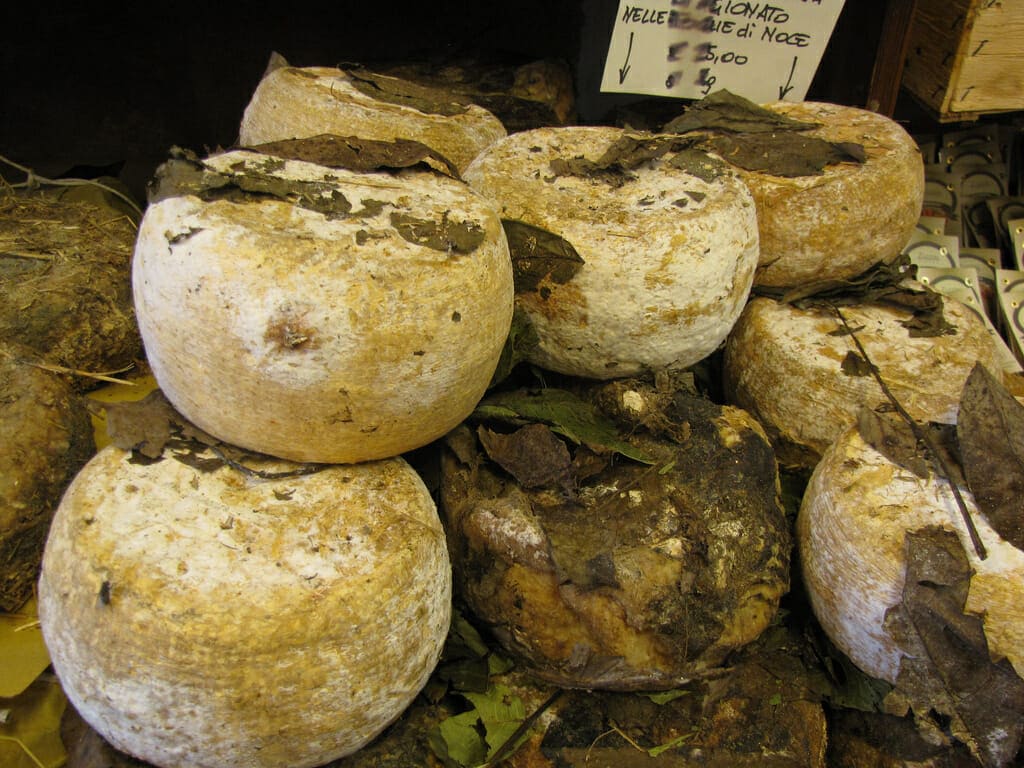In Tuscany you can find particular types of cheeses that are unique to this region. Including a cheese degustation should be high on your “what to do in Tuscany” list as it can offer a glance into the history and traditions of the region.
There are many traditional cheese producers in Tuscany that offer tours and degustations. A tour often begins with a visit to the farm to see the start of the cheese production process. Depending on the season, you get a glimpse of different stages of cheese making and maturation. After that, of course, comes the most exciting part, the sampling.

Cheese making traditions in Tuscany go many centuries back. Sheep farming was in full swing here during the Etruscan times. The Roman author Pliny the Elder mentioned the Tuscan pecorino cheese around 70 AD. Today, many types of delicious cheese are made in the region: goat cheese (“caprino”), sheep cheese (“pecorino”), raviggiolo from cow or sheep milk, caciotta, ricotta, – each of them has a distinctive taste and texture.
One of the oldest Tuscan cheeses is Marzolino del Chianti, already known in the 15th century and enjoyed by Lorenzo de’ Medici. It is made in March with spring sheep milk and is eaten young and delicate, just after a week, or matured for five months. Produced in small butches in the Chianti area, it is a real delicacy. The most conservative farmers still adhere to the ancient recipe that calls for wild artichoke extract instead of animal rennet.

Another excellent cheese that Tuscany is famous for is caprino, made with goat milk. It is soft and creamy, with the flavour depending on the production area. Small cheese shapes can be coated in charcoal, black pepper, red chili pepper, wild local herbs, basil, mint, or garlic. Each village and farm have their own preferred flavors and secret methods.
Raviggiolo is made with cow or sheep milk. This very soft cheese is consumed within one-two days after production. Locals usually eat it with fruit or jams that that do not cover its delicate taste.

You will be certainly sampling many varieties of pecorino, starting from young, just a few weeks old soft slices, and going to stronger spicy types matured for up to 10 months. Each area of Tuscany has different ways and methods of production that give their cheeses unique color, flavor and texture. But no matter where and what cheese you will be offered at a degustation, they will all have one thing in common – they are made with love and utmost respect for the Tuscan tradition of quality. This is about what to do in Tuscany !
Photos by: Dottie Day, Phil Whitehouse, Olivia & Marino.

